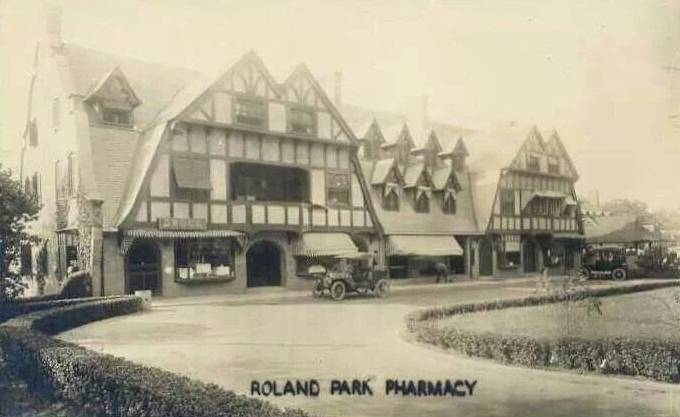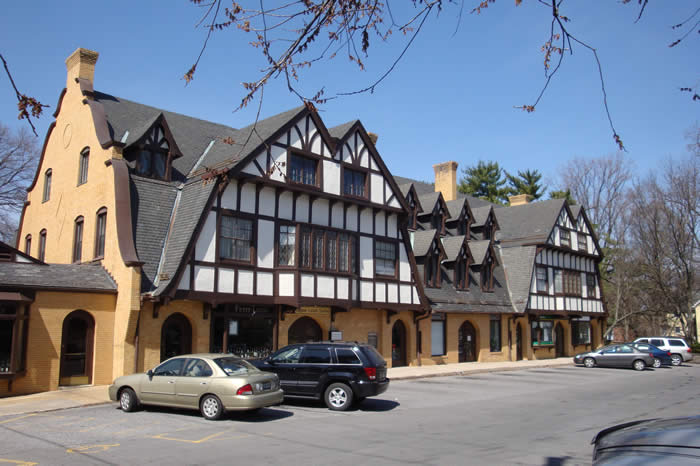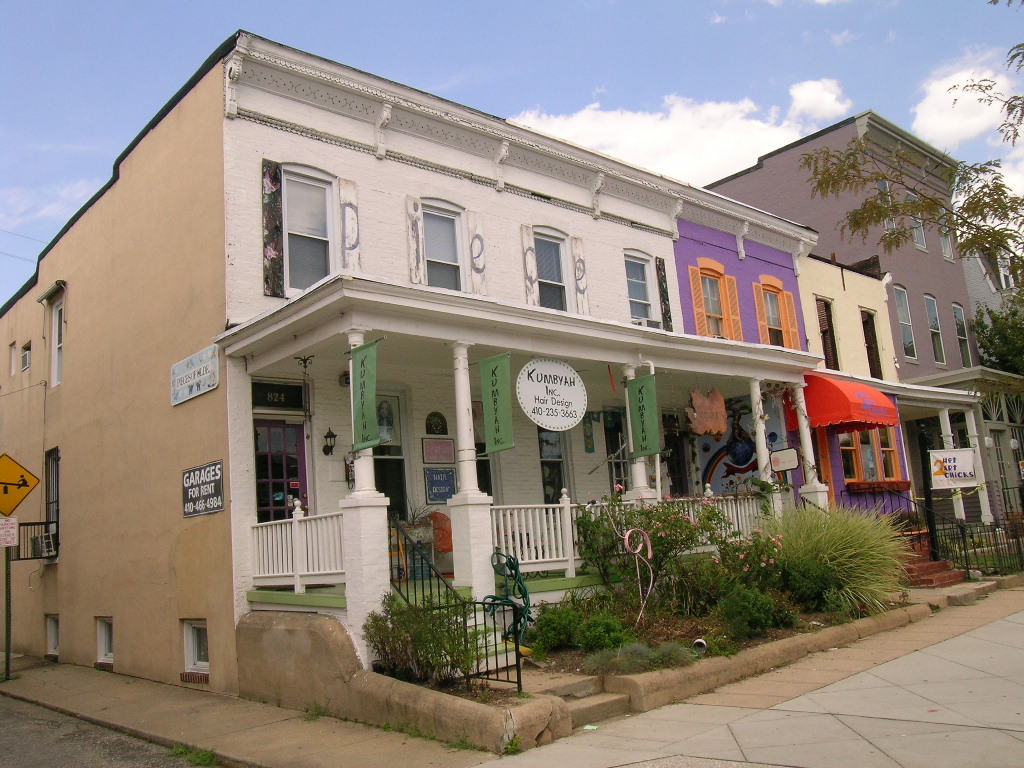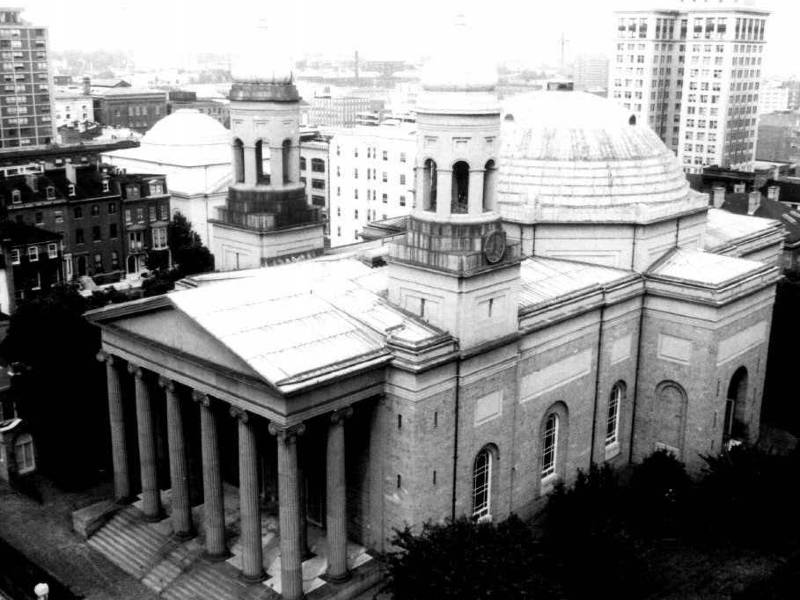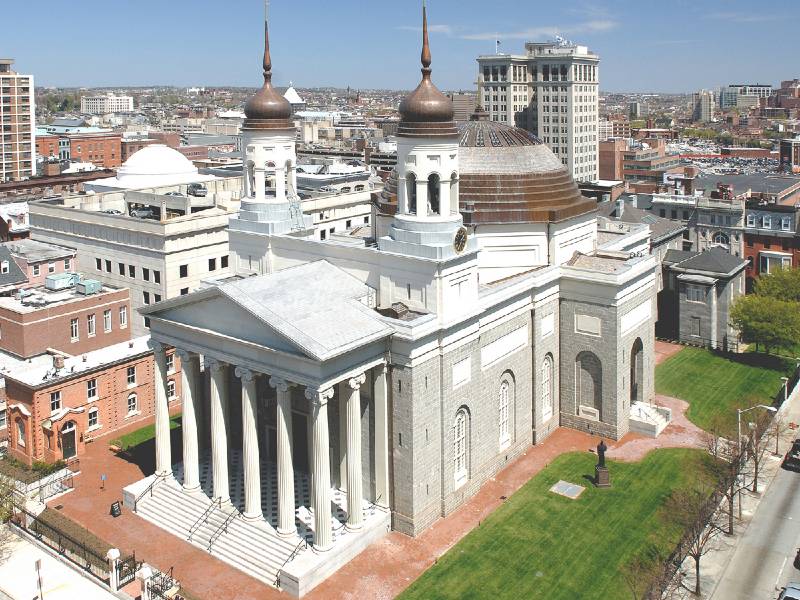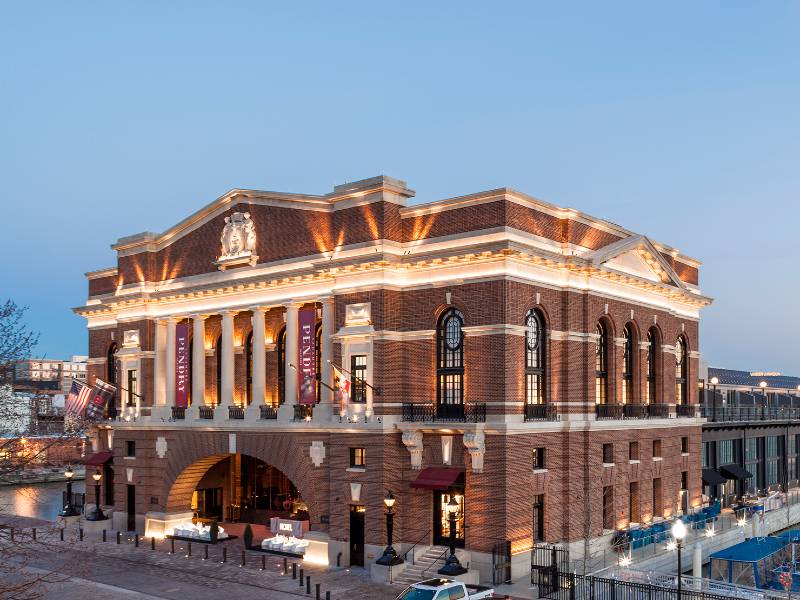They did it! Preservation Maryland Board Member Diane Caslow and her husband, Jeff Caslow, have explored each of Maryland’s twenty-four counties over two year. This is their final travelogue from Baltimore City.
FROM DIANE AND JEFF’S TRAVELOGUE
It is hard to believe, but we are done! We saved Baltimore City for the last of our twenty-four month adventure to explore each of Maryland’s twenty-four counties and Baltimore City in Maryland.
There is so much to explore but we had to choose a focus for our day trip to Baltimore City. We decided to follow Charles Street with some diversions along the way, and finish in Fells Point, one of the oldest parts of the city.
“Founded in 1729, Baltimore was established as an independent city that is not part of any county. The city’s Inner Harbor was once the second leading port of entry for immigrants to the United States and a major manufacturing center. With hundreds of identified districts, Baltimore has been dubbed a ‘City of Neighborhoods.’ Baltimore has more public statues and monuments per capita than any other city in the country, and is home to some of the earliest National Register Historic Districts in the nation. Close to a third of the city’s buildings are designated as historic in the National Register, which is more than any other U.S. city.”
With this historical context for the backdrop for our day, off we went. We cheated a bit right off the bat, as our first stop was still in Baltimore County, where we live, at Stone Mill Bakery for coffee and baked goods. However, I can technically count them as Baltimore City, given that the bakery is located in Meadow Mill along the Jones Falls. As our first stop inside the city was Roland Park, and given our early start, Johnny’s in Roland Park Shopping Center was not open for breakfast yet, and we will be back.
Roland Park
Roland Park was the first planned suburban community in North America, developed between 1890 and 1920 as a streetcar suburb – a streetcar line from Downtown serviced the newly developed neighborhood. The early phases of the neighborhood were designed by Edward Bouton and Frederick Law Olmsted, Jr. We took our own walking tour, starting at the ca. 1907 Roland Park Shopping Center, which was the first of its kind plaza-style center in the nation. Our early morning walk through the neighborhood gave us a peak into the past and the variety of home styles popular during the turn of the last century.
Hampden
Hampden was originally settled as a residential community for workers at the mills that sprung up along the Jones Falls. Many of the mill buildings have been adaptively reused for offices, light industry, restaurants, and residences. Preservation Maryland recently completed a grant-funded project to research, design, and install eight new historic interpretive signs along the mills of the Jones Falls Valley. You can explore on a self-guided tour online or in person.
The residential neighborhood around the mills is as vibrant as ever especially along West 36th Street, known as The Avenue, that has a diverse offerings of restaurants, art galleries, and boutiques. We bought some vegan biscotti at Harmony Bakery, checked out the start of a cooking class at Baltimore Chef Shop, wandered into Falkenhan’s, an old-fashioned hardware store, and bought some Maryland craft beers at the Wine Source for future enjoyment.
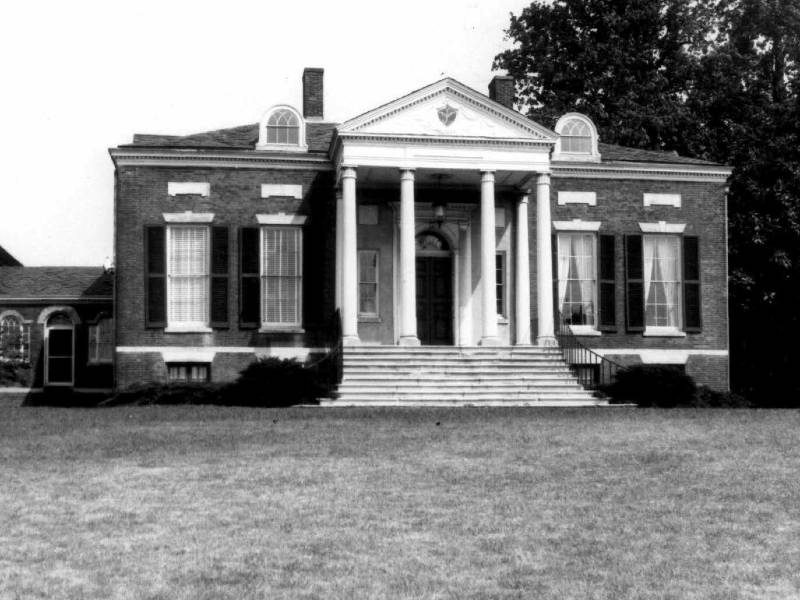
Homewood House at Johns Hopkins.
CITY OF NEIGHBORHOODS: Guilford, Charles Village, Druid Hill and Bolton Hill
We took a detour to Guilford to see the end of the summer flowers in Sherwood Garden, then to Charles Village, the home of Johns Hopkins University. Just inside the main entrance of the university sits the Homewood House. It was given as a wedding gift in 1800 by Charles Carroll to his son, and birthplace of John Carroll who became Governor of Maryland. In 1897, Homewood House became the first Gilman School. In 1902, the estate was given to Johns Hopkins University for its campus. We went west to drive through Druid Hill Park, which dates from the 1860’s. We stopped to admire the conservatory, built in 1888, which still looks beautiful today. We drove through Bolton Hill, a well-preserved neighborhood of late 19th century homes, one of Baltimore City’s historic districts.
- Baltimore Bascilica, 1984. Photo from the Maryland Historical Trust.
- Contemporary image of the Bascilica from Wikipedia.
Mount Vernon
We spent more time than we expected in Mount Vernon as a docent for the Baltimore Basilica gave us an in-depth tour, filled with not only the history of the church, but wove in the history of Baltimore. It is the first Roman Catholic cathedral built in the United States. It was designed by Benjamin Henry Latrobe, considered the “Father of American Architecture.” Construction started in 1806 and opened in 1821. The main church is beautiful and the undercroft showed off the craftsmanship of the bricklayers; part of the recent major restoration project. We wandered around the streets of Mount Vernon, admiring the beautiful architecture and had a quick lunch at Marie Louise Bistro. I did not want to rush through the restored Walter’s Museum Hackerman House, so we had to leave that for another day.
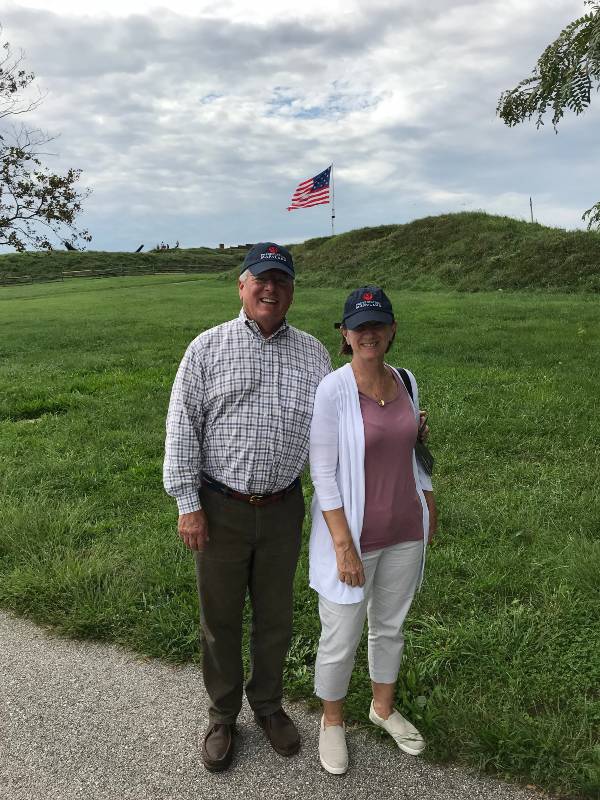
Diane and Jeff Caslow at Fort McHenry, 2018.
Fort McHenry
No visit to Baltimore is complete without a trek to Fort McHenry. “During the War of 1812 an American storm flag was flown over Fort McHenry during the bombardment, and replaced by a larger flag on the morning of September 14, 1814. The larger flag signaled American victory over the British in the Battle of Baltimore. The sight of the flag inspired Francis Scott Key to write the poem “Defense of Fort Mc’Henry” that was later set to the tune “To Anacreon in Heaven” and became known as the “Star Spangled Banner“, the national anthem of the United States. We joined in with the throngs of visitors and explored the national park. How fitting to stand under a replica of the flag that flown 104 years ago.
Around the Inner Harbor
We came back around the harbor, stopping at the Baltimore Museum of Industry, snapped a picture of the Domino Sugars sign and coffee at Order & Chaos Coffee. We explored a bit of the Federal Hill neighborhood, then up to the top of the hill to overlook downtown Baltimore. “For much of the early history of Baltimore, the hill was known as Signal Hill because it was home to a maritime observatory serving the merchant and shipping interests of the city by observing the sailing of ships up the Patapsco River and signaling their impending arrival to downtown businesspeople.” We just enjoyed the city skyline.
- Sagamore Pendry Hotel. Photo from Whiting-Turner.
A Finale in Fells Point
What better place to end our adventure, but in Fells Point, one of the first places that I explored with my husband Jeff over thirty-five years ago… Even then I had a curiosity about buildings and remember taking pictures of the abandoned pier that is now Bond Street Wharf. Who knew where some of these early interests in old building, history, and an appreciation of adaptive reuse would take us so many years later….on an adventure beyond our imagination!?
BRIEF HISTORY OF FELLS POINT
“Founded about 1763, by William Fell, who was attracted by its beautiful, deep water and proximity to agriculture and thick forests, and Fell’s Point became a shipbuilding and commercial center. Some of the first vessels commissioned for the U.S. Navy were built in Fell’s Point shipyards, including the “U.S.F. Constellation” in 1797. The area became best known for producing topsail schooners, including “Chasseur” built in 1812 and for which the “Pride of Baltimore II” is modeled. Fell’s Point remained a shipbuilding center until the Civil War, when it could no longer handle the larger ships. Much of the manufacturing left the city by the 1980s, resulting in urban decay until preservationists organized to save the area’s historic buildings. In 1965, city, state and some federal transit planners proposed to link Interstate 83 and Interstate 95, by building an elevated highway along the north shore of the Baltimore Harbor. This project would have entailed extensive demolition within Fell’s Point, and across the river in Federal Hill/South Baltimore and the highway would have cut off the remainder of the neighborhood from the waterfront. A “expressway revolt” against the proposals was raised by local residents and derailed the project. Fell’s Point’s addition to the National Register of Historic Places prevented the use of federal funds for the road project, and contributed to the project’s cancellation.”
With this backdrop we explored the streets of Fells Point, along with a crowd of visitors enjoying the bars and restaurants and nightlife. There is a walking ghost tour saved for another day. Our final stop, and a new jewel in the city, was the bar at the Sagamore Pendry Hotel Bar, where we could admire a great example of adaptive reuse and raise a glass to toast our adventure.
The Caslows Signing Off from Their Journey…
With a final thumbs up, we completed what started as a simple thought, which was to discover more of our state and see what we could find. Little did we know it would take us to places far and wide, see some amazing sights, and meet some even more amazing people. Thanks to my co-pilot Jeff Caslow, who made this adventure so much fun to share, to the Preservation Maryland staff who helped to edit and link the places we went, to those who read about it, and to those who might be inspired to take off on a little history, preservation, shop, drink and eat local on and off the beaten paths of Maryland!
COUNTY-BY-COUNTY INSTALLMENTS
- November 2016: At World’s End in Cecil County
- December 2016: Washington County Bridges
- December 2016: Anne Arundel for a Capital Christmas
- February 2017: Winter Walk in Wicomico County
- March 2017: African-American History in Prince George’s County
- March 2017: Main Street March Madness in Caroline County
- April 2017: Horses and Hounds Byway through Baltimore County
- May 2017: Riding the Rails through Allegany County History
- July 2017: Howard County Historic Highlights
- August 2017: Water Moves Us to Dorchester County
- September 2017: The Stories and Storytellers of Charles County
- October 2017: Exploring the Greenery of Garrett County
- November 2017: Kent County Through Time
- December 2017: Finding History & Food in Frederick County
- January 2018:Winter Weekend in Talbot County
- February 2018: Montgomery County’s Rural Character
- March 2018: Exploring Harford County Inside and Out
- April 2018: Seeing St. Mary’s County
- May 2018: Wonderful Wocester County
- June 2018: Exploring the Rural Character of Carroll County
- August 2018: A History Quest through Queen Anne’s County
- August 2018: A Perfect Summer Day in Somerset County
- September 2018: Calvert County by Canoe
- December 2018: Baltimore City at It’s Best


